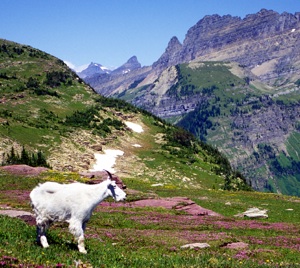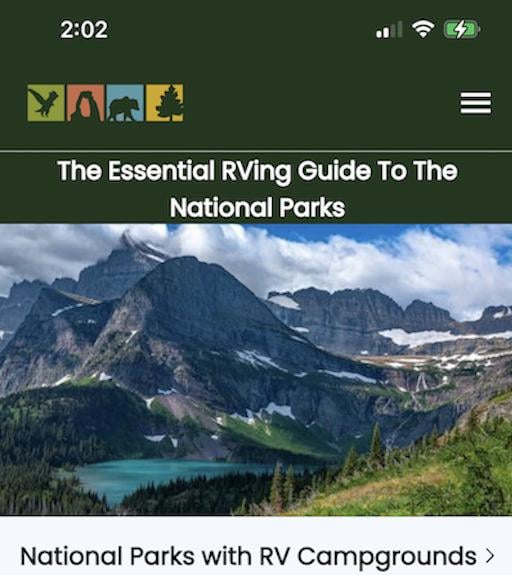An argument can be made that no national park in the conterminous 48 states has as robust a wildlife menangerie as does Glacier National Park.Within the park's 1 million acres roam grizzly bears, wolves, mountain goats, bighorn sheep, moose, wolverines and more. There are elk and the unusual northern bog lemming, marmots and Golden-mantled ground squirrels, pikas and shrews, Canada lynx and bobcats, and coyotes, badgers and striped skunks.
And this is just for starters.
There are at least six bat species, white-tailed deer and mule deer, and Least chipmunks, Yellow pine chipmunks, and red-tailed chipmunks.
And that's just part of the list of mammals in the park. There also are three species of reptiles -- the common garter snake and western terrestrial garter snake -- and the Western painted turtle.
More than 260 bird species have been identified in Glacier, a decent number of fish species, but only six types of amphibians.

Mountain goats are easy to spot on Logan Pass.
Kurt Repanshek photo
But for most it's the park's charismatic megafauna -- the mountain goats, bighorn sheep, moose, elk, wolves, and even grizzly bears -- that generate the most excitement.
Logan Pass is an excellent spot to see mountain goats, and on occasion bighorn sheep can be spotted there as well.
Of course, the key to successful wildlife watching often is simply being at the right place at the right time and having the proper equipment such as binoculars. In fact, one of the best ways to see wildlife is to use binoculars and patiently scan open areas. In the high country, this technique can reward the viewer with sightings of bears, bighorn sheep, marmots, mountain goats, eagles and much more.
The skies over the park also contain wildlife -- birds. There are many documented migration routes for raptors (birds of prey) that follow mountain ranges and ridges in Waterton-Glacier. These are significant travel corridors through which, using rising thermals and updrafts from the mountains, thousands of birds make their semi-annual migrations to winter or summer ranges. A vast majority of the birds are golden eagles, with some bald eagles and hawks mixed in.
Remember, when viewing wildlife you should stay at least 100 feet away from large animals and a minimum of 300 feet from bears. Instead of moving closer, use binoculars or a telephoto lens to improve your view. Keep the animal’s line of travel or escape route clear. If wildlife approaches you, move away.
To find out what animals, birds, amphibians, reptiles, and fish you might encounter in the park, search the list on this page.


